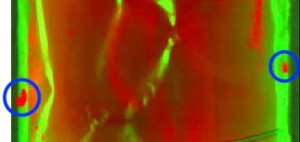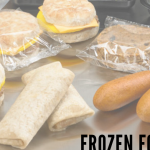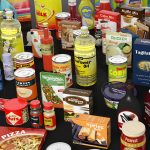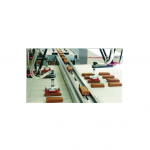
Hyperspectral Imaging Applications in Food and Packaging
Hyperspectral imaging combines infrared spectroscopy with machine vision to produce images which can be colour coded according to the chemical composition of the objects being imaged. Its ability to identify differences in the chemical composition of organic materials opens up major new possibilities for detecting impurities in food products. Most importantly, because affordable systems are available that operate in real time, they can also be used on high speed production lines for food processing and packaging inspection.
Organic materials selectively absorb light at different wavelengths in the infrared region of the spectrum depending on their composition. This gives them distinctive ‘fingerprints’ which can be used to uniquely identify them. Chemical colour imaging produces images where each pixel is colour coded according to the chemical composition of the material at that point. The resulting colour images can be processed and analysed using standard machine vision tools.
Typical applications for hyperspectral imaging in the food processing industry include:
- Finding foreign materials (e.g. plastic pieces or insects in products)
- Measuring product quality (e.g. concentration of sugar, homogeneity)
- Controlling different production stages (e.g. before and after baking, mixing)
Typical applications in the food packaging industry include:
- Seal inspection (for contamination)
- Product uniformity
- Quality assurance through the packaging material
Food sorting applications
By ‘tuning into’ just a few key wavelengths that would distinguish between specific materials or identify known contaminants, hyperspectral imaging can provide a robust and reliable method of foreign body detection in foodstuffs. The ability to discriminate on the basis of chemical composition is essential in many applications. For example when sorting nuts such as almonds, kernel and shell fragments cannot be sorted on the basis of size colour or shape. In addition, impurities such as pieces of wood, or mould or rot on nuts cannot be identified very easily using traditional imaging methods. Other similar sorting applications include:
Grains and seeds
- Frozen vegetables (removing foreign objects before packaging)
- Dried food (for example dried mushrooms can look similar to wood shavings)
- Meat (to distinguish between fat, bone and gristle)
Read more: Hyperspectral Imaging Applications in Food and Packaging





